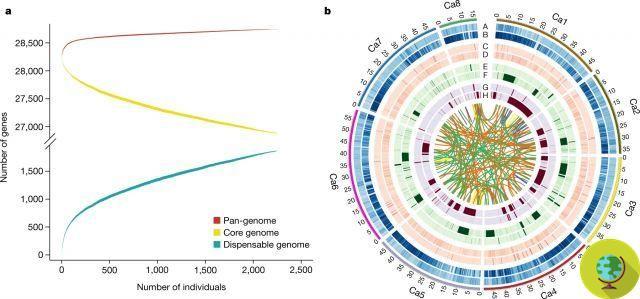The largest genetic study conducted on plants could represent a breakthrough in achieving the UN goal of Zero Hunger
He is about to end up run over, his mother saves himThe largest genetic study conducted on plants so far could represent a turning point for the achievement of the UN goal "Zero Hunger"
A team of international researchers (from 11 countries) has successfully cataloged all the varieties of chickpeas existing in the world: this could lead to the development of more resilient and higher yielding varieties, for the benefit of the poorest populations whose territories are weakened by drought and extreme climatic phenomena. The researchers sequenced the legume's genomic map by studying 3.171 cultivated varieties and 195 wild chickpea varieties - the most important genomic sequencing study conducted to date.
The pan-genomic map obtained is now available online, available to all researchers and growers: the aim is to find new cultivation strategies for this legume to increase crop productivity, climate resilience and benefits for human health. . Chickpea (Cicer arietinum) is the third largest crop in the world (grown in more than 50 countries, including those of South Asia and Sub-Saharan Africa, as well as one of the most important for nutritional security and human health: offers valuable plant-based protein, fiber and other micronutrients - for poor populations, a veritable mine of benefits. However, global chickpea production has stagnated over the past five decades, sadly contributing to increasing levels of malnutrition in countries under development: a complete genetic map of the legume could provide useful information and resources to improve and increase its cultivation - especially in view of the achievement, by 2030, ofZero Hunger goal promoted by the United Nations.
Mapping the genetic diversity of chickpea is an important step forward for the future of the legume and, in general, of human nutrition - says Professor Siddique, among the authors of the study. - Although the genetic material of 80.000 varieties of chickpeas is now stored in gene banks around the world, there are very few so far that have been sequenced by researchers. Through this research, we have created a sort of “tree”, using the ceni present in 80% of the individuals of a species, to estimate the development of the chickpea varieties over the last 21 million years. In this way we were able to reconstruct the history of the legume and we can affirm that it originated in the Mediterranean region, from where it was exported all over the world. We are also able to understand how domesticated species evolved, differentiating over time from ancient wild species.

@ Nature
Follow your Telegram | Instagram | Facebook | TikTok | Youtube
Source: Nature
We also recommend:
- Is chickpea flour more nutritious than "normal" flour?
- Is it raining microbes? New research has found that rain-borne bacteria colonize plants
- Beans and lentils will save us! We need to grow more legumes to reduce pesticides and really feed the earth


























